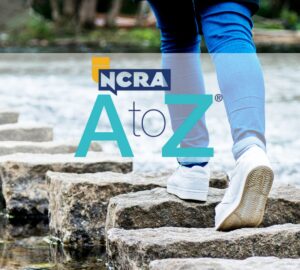By Lynette Mueller
Being realtime-capable should be the goal of every court reporter. My realtime goal is to always strive for 99.8 percent translation rate on every job. The prep work is essential to maintain or exceed that goal. My writing is constantly evolving (even after 30 years of reporting). Writing short is paramount to the success of my translation rate, for keeping up with the fast talkers, and also being kind to my body — specifically my back and hands.
The Oct. 2015 JCR has an article, “Preparation guide for flawless realtime output,” with lots of great tips from some amazing court reporters across the country. Definitely worth the read!
Recently, I’ve focused on brief forms. Creating briefs on the fly is an acquired skill, for sure. The BriefIt feature in my Case CATalyst software (and other CAT software vendors have similar features) is an integral and valuable resource and helps immeasurably with my high translation rate, even though the proceedings could be a fast-paced deposition. (It takes focus and dedication to be able to look at the screen during the proceedings and capture those suggested briefs. During a recess is a good time to take a few minutes to go over the suggested briefs. With my software, the phrases I stroke out the most (with a suggested brief) are highlighted in a bolded color. Genius! It’s easy to concentrate on the strongest colors and make a note of the suggestions.
One may ask, “Okay, how do I memorize and keep track of all the brief forms I want to add to my dictionary?”
Our minds have great capacity to recall all kinds of information. I feel it’s good to have a multi-prong approach to memorizing brief forms. Remember to take a handful of briefs at a time to incorporate into your writing; otherwise, you’ll be overwhelmed and could end up dropping important testimony.
Here are a few suggestions to help with that memorization:
- Be sure you want to improve your realtime writing and are invested in the process.
- Set a goal for yourself.
- Write out the brief forms you wish to incorporate into your writing.
- Make notes to yourself.
- Apply repetition to your practice. As I said, make sure you start with small bits before moving on to the next round of briefs. Keep this in your memory banks before moving on to the next set.
- Do most of your studying in the afternoons. One study suggested your ability to memorize relates to the time of day you study, with the afternoon appearing to be the best time of day.
- Ensure you are well rested in order to retain the memories. Make sure you take breaks and come back to it later in order to find out how much you actually retained. Then you can focus on the briefs you might have more trouble with.
Next are the steps I’ve implemented that have greatly improved my ability to incorporate new briefs into my writing.
- Use your briefing software feature all the time during the job and add the briefs that make sense to your personal dictionary. Dictionary building is key to the success of a higher translation rate.
- Make sticky notes and attach to your writer or computer.
- Use the app like Sticky Notes. This is a great tool to use because you’ll never lose that physical note again. Simply open the app and move it to the side of your laptop screen. Multiple colors are available for families of briefs!
- I like to use my Recorder app on my iPhone to dictate the briefs I want to work on. By recording the words and phrases, it is an easy task to set up my writer to practice on those briefs. You will get instant feedback if you are writing the briefs correctly when you are hooked up for realtime during your practice session.
- The last prong of my process is a cool app called Tinycards. This is a free flashcard app to help make memorization more fun! This app is a game where you can unlock new levels and keeping your memory strength bar full! Tinycards uses spaced repetition and other smart learning techniques to help you master new material efficiently. You can create your own decks and share them with friends or pick from a variety of collections exclusive to Tinycards. You’ll find constellations, country capitals, history, and lots more.
I’ve already created two Tinycards called Steno Brief Forms – Part 1 and Steno Brief Forms – Part 2. When you set up your new (free) account, simply search for these and any other topics to add to your stream and start memorizing those briefs today!
Technology is great!
Lynette L. Mueller, RDR, CRR, is a freelancer reporter in Johns Creek, Ga. She can be reached at lynette@omegareporting.com. She reports that a short video will be on her blog at the beginning of the article.









